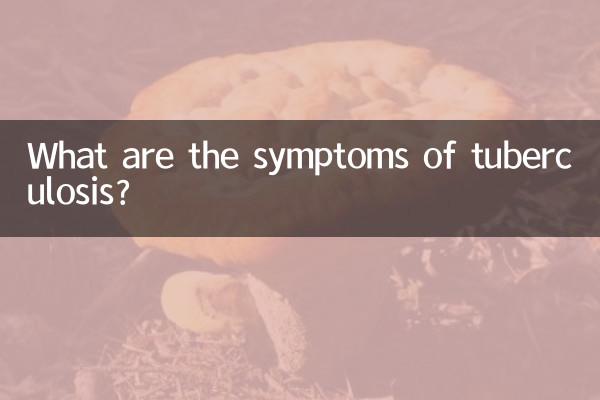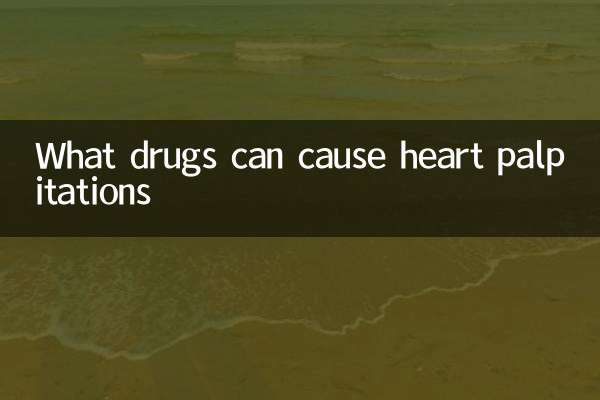What are the symptoms of tuberculosis?
Pulmonary tuberculosis (tuberculoma) is a special form of pulmonary tuberculosis, usually caused by Mycobacterium tuberculosis infection, forming local encapsulated lesions. In recent years, tuberculosis has remained a global public health concern, and understanding its symptoms is crucial for early diagnosis and treatment. The following is a detailed analysis of the symptoms of tuberculosis, compiled based on the hot medical topics on the Internet in the past 10 days.
1. Common symptoms of tuberculosis

The symptoms of tuberculosis may vary from individual to individual, but the following are the most typical clinical manifestations:
| Symptom type | Specific performance | frequency of occurrence |
|---|---|---|
| respiratory symptoms | Chronic cough, expectoration (may be bloody), chest pain | About 70%-80% of patients |
| systemic symptoms | Low-grade fever (obvious in the afternoon), night sweats, fatigue, weight loss | About 50%-60% of patients |
| Other symptoms | Loss of appetite, difficulty breathing (late stage), swollen lymph nodes | About 30%-40% of patients |
2. Special symptoms and complications of tuberculosis
Some patients may develop atypical symptoms or complications and require special attention:
| special circumstances | Description |
|---|---|
| Asymptomatic presentation | About 20% of patients have no obvious symptoms in the early stage and are only discovered through physical examination |
| Hemoptysis | When the lesions invade blood vessels, they may cause massive hemoptysis and be life-threatening. |
| secondary infection | May be complicated by bacterial or fungal infection, aggravating fever and sputum production |
3. Comparison of symptoms between tuberculosis and other lung diseases
The symptoms of tuberculosis are easily confused with pneumonia, lung cancer, etc. The following are the key identification points:
| Disease name | Symptom differences | Imaging features |
|---|---|---|
| tuberculosis spheroid | Long course of disease (>2 weeks), obvious night sweats, and positive acid-fast staining of sputum | Well-circumscribed spherical lesions, often with calcification |
| bacterial pneumonia | Acute onset, high fever, purulent sputum | patchy infiltrates |
| lung cancer | Progressive weight loss, irritating dry cough | Lobulated mass, spiculation sign |
4. High-risk groups and medical treatment recommendations for tuberculosis
The following people should be highly vigilant when experiencing related symptoms:
1.People with low immunity: People with HIV infection, diabetes, and people using immunosuppressants for a long time
2.close contacts: People who live or work with patients with active tuberculosis
3.Special occupation:Medical staff, prison staff, etc.
Medical Tips:If the cough lasts for more than 2 weeks and is accompanied by symptoms such as low-grade fever and night sweats, it is recommended to do the following immediately:
- Chest X-ray or CT examination
- Acid-fast staining of sputum smear
- PPD test or gamma-interferon release test
5. Latest treatment trends and preventive measures
According to recent data released by the International Tuberculosis Alliance (October 2023):
| treatment progress | efficient | Course of treatment |
|---|---|---|
| standard quadruple therapy | 85%-90% | 6-9 months |
| New short-range solution | 92% (clinical trials) | 4 months |
Prevention recommendations:
1. BCG vaccination for newborns
2. Keep the room well ventilated
3. Avoid close contact with patients with active tuberculosis
4. Regular screening of high-risk groups
The symptoms of pulmonary tuberculosis are diverse, and early identification is crucial to prognosis. If suspicious symptoms occur, you should seek medical treatment promptly and complete standardized treatment to avoid the development of drug-resistant tuberculosis. The latest research shows that genetic testing can quickly determine drug resistance of tuberculosis bacteria and provide support for precise treatment.

check the details

check the details